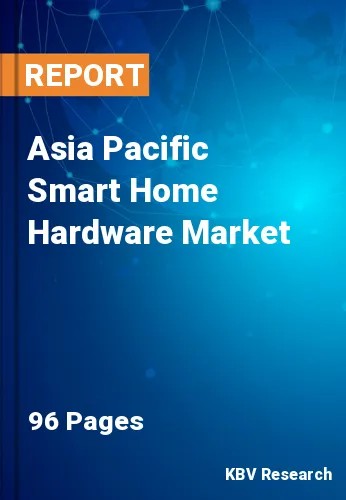The Asia Pacific Smart Home Hardware Market would witness market growth of 12.9% CAGR during the forecast period (2022-2028).
While the presence of many variables impacts the emergence of connected home solutions, customers hold the most influence. Consumer desire for linked or smart devices is driving more than half of the survey respondents' product development and strategies. Consumer knowledge of the advantages of linked devices follows closely following consumer demand as a key market tendency propelling development, smart technology research, and production. Although consumer demand for smart home gadgets is important, it has concerns about personal data privacy and the security dangers that come with maintaining a connected life. Consumers must be aware of how the data is utilized and how it helps people. Data gathered by linked devices presents an opportunity for industry decision-makers.
Products are being revolutionized by information technology. Products have evolved from simple mechanical and electrical components to complex systems that incorporate sensors, hardware, microprocessors, data storage, software, and networking in a variety of ways. Such "smart, connected devices," enabled by massive advances in device downsizing and processing power, as well as the network advantages of pervasive wireless connectivity, have ushered in a new phase of the competition.
A huge part of the Asia Pacific population is realizing the benefits of smart technologies and progressively incorporating smart technologies in every possible hardware system, like in the current scenario, people are adopting smart home automation system as part of daily routine. Cities recorded almost a significant number of India's present population and generate substantial revenue for the country's GDP (Census 2011). By 2030, urban regions are predicted to house a major share of India's population and generate a significant share of the country's GDP. The governments of various nations are showing sufficient support in order to bring smart technologies into the domestic market by imposing strict regulations for maintaining energy efficiency and contributing to the maintenance of the environment.
It necessitates the creation of a complete physical, social, institutional, and economic infrastructure. All of such factors contribute to increasing the quality of life and bringing investment and people, thereby initiating a virtuous cycle of growth and development. The Smart City development is a move in that direction.
The China market dominated the Asia Pacific Smart Home Hardware Market by Country in 2021, and would continue to be a dominant market till 2028; thereby, achieving a market value of $4,853.7 Million by 2028. The Japan market is experiencing a CAGR of 12.2% during (2022 - 2028). Additionally, The India market would exhibit a CAGR of 13.6% during (2022 - 2028).
Based on Product, the market is segmented into IoT Hardware for Control & Connectivity Devices, IoT Hardware for Security & Surveillance Equipment, and IoT Hardware for Smart Appliances. Based on countries, the market is segmented into China, Japan, India, South Korea, Singapore, Malaysia, and Rest of Asia Pacific.
Free Valuable Insights: The Worldwide Smart Home Hardware Market is Projected to reach USD 48 Billion by 2028, at a CAGR of 12.5%
The market research report covers the analysis of key stake holders of the market. Key companies profiled in the report include Google LLC, Amazon.com, Inc., Schneider Electric SE, Honeywell International, Inc., ABB (ASEA Brown Boveri) Group, Johnson Controls International PLC, Panasonic Corporation, Legrand S.A., Samsung Electronics Co. Ltd., and General Electric (GE) Co.
By Product
By Country
Our team of dedicated experts can provide you with attractive expansion opportunities for your business.

